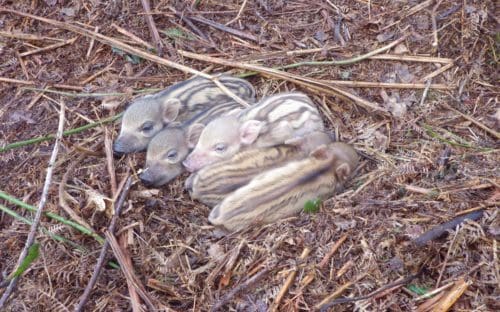Dormice win the cuteness award, although they are rarely seen due to their secretive nature. The Common Dormouse is maintaining healthy populations in the National Landscape. These tiny creatures thrive in ancient woods where there are lots of hazel trees. 27% of the land within the Wye Valley National Landscape is woodland or forestry, providing precious habitat for the Common Dormouse.
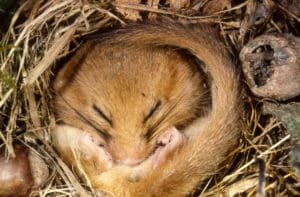

ou might not see them but Fallow, Roe, Red and Muntjac deer live in these woods. There is a thrill knowing that such large animals live here, but as deer in the UK have no natural predators their numbers have to be managed to prevent damage to our precious ancient woodland. Deer love to nibble on new buds, shoots and tree bark, making it hard for trees to regenerate. They also have a taste for flowering plants, which reduces the sources of nectar for insects to feed on.
Fallow deer are usually seen in herds or small groups, with over 1000 in the Wye Valley. Brought to Britain by the Romans they became extinct here following the collapse of the Roman Empire. They were reintroduced in the 11th century and kept in parks but as the fashion for deer parks declined in the 15th century many escaped. Their descendants are the wild fallow deer population in Britain today.
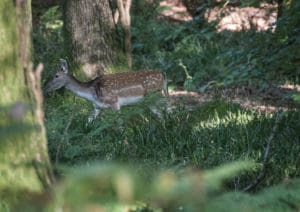

The Roe deer is a native species having been here for up to 10,000 years. Over-hunting and forest clearance led to their extinction in England by 1800 but in wooded patches of Scotland they survived. Natural spread and Victorian reintroductions has ensured Roe deer are widespread today. They are usually seen alone and are active during the day and at night. They make dog-like barking noises when disturbed or alarmed.
Download Identifying Roe Deer Leaflet
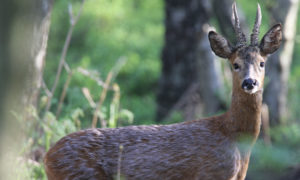

Muntjac are a small non-native species introduced to Woburn Park from China in the early 20th century. Following releases and escapes feral Muntjac are now widespread and increasing in numbers and range. They don’t have a defined breeding season, breeding all year round and are generally solitary or found in pairs. They have a loud bark which has led to them being known as the ‘barking deer’. Frightened Muntjac may also scream. Does and kids communicate with a series of squeaks.
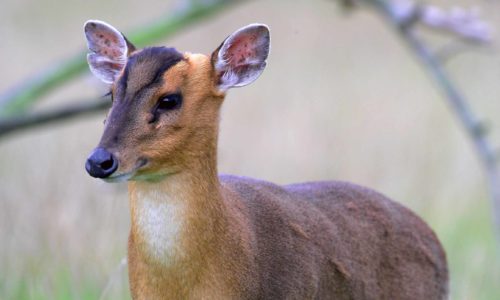

Red Deer are Britain’s largest native land mammal. You might be lucky to spot one on the Welsh side of the Wye Valley National Landscape. They are not found on the English side of the Wye. They migrated to Britain from Europe some 11,000 years ago and were used as a source of food, tools and skins by Neolithic man. Their populations declined as forests were cleared, remaining only in Scotland and south west England. The Normans kept red deer in parks and protected them for royal hunting. Victorian reintroductions helped raise their numbers.
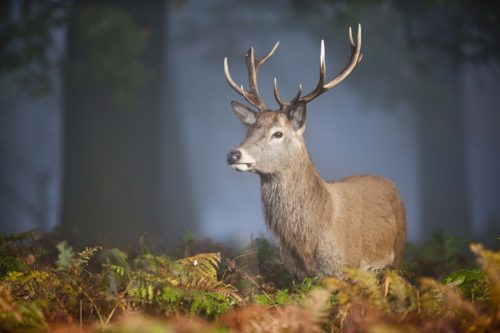

The best time to see bats in the National Landscape is to take a walk at dusk or dawn during the summer months, when it is possible to see large numbers of bats coming and going from their roosts. Thirteen species of bat are found in the Wye Valley, including one of the rarest bats – the Lesser Horseshoe, a tiny, fast-flying bat weighing about the same as a 10p coin. The Wye Valley has the greatest concentration of Lesser Horseshoe bats in the UK, totalling about 26% of the national population. Their roosts in the lower Wye Gorge are protected as a Special Area of Conservation (SAC). There are also healthy populations of Greater Horseshoe bats. Both species thrive in areas of woodland, tall hedgerows and unimproved pasture. They roost and breed in old barns and outbuildings and it is thought they hibernate in the many disused mines in the area, including old mines in the Forest of Dean.
Penallt Old Church and churchyard is the site of the largest known nursery roost for lesser horseshoe bats in the country. It stands high above the River Wye which is an important flight line and feeding habitat for greater horseshoe bats. Cadora Woods is another good place to spot bats.
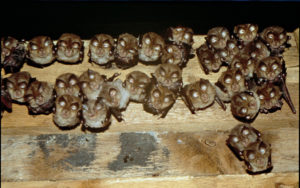

Boar were common in the Forest of Dean up to medieval times, but they became extinct by the 14th century. Some 20 years ago farmed boar escaped and have now become feral on the English side of the Wye in the Forest of Dean. They are secretive and mostly nocturnal but signs of their presence are easy to see – churned up roadside verges and damaged fields. Boar have a long breeding season but most litters are born in the spring (Feb to May) when there may be potentially dangerous defensive sows with young piglets. Although unlikely to attack people they do occasionally cause problems so do not walk through dense undergrowth where they may be encountered at close quarters. Do not approach or interfere with them and give the animals a wide berth. Put your dogs on a lead immediately.
